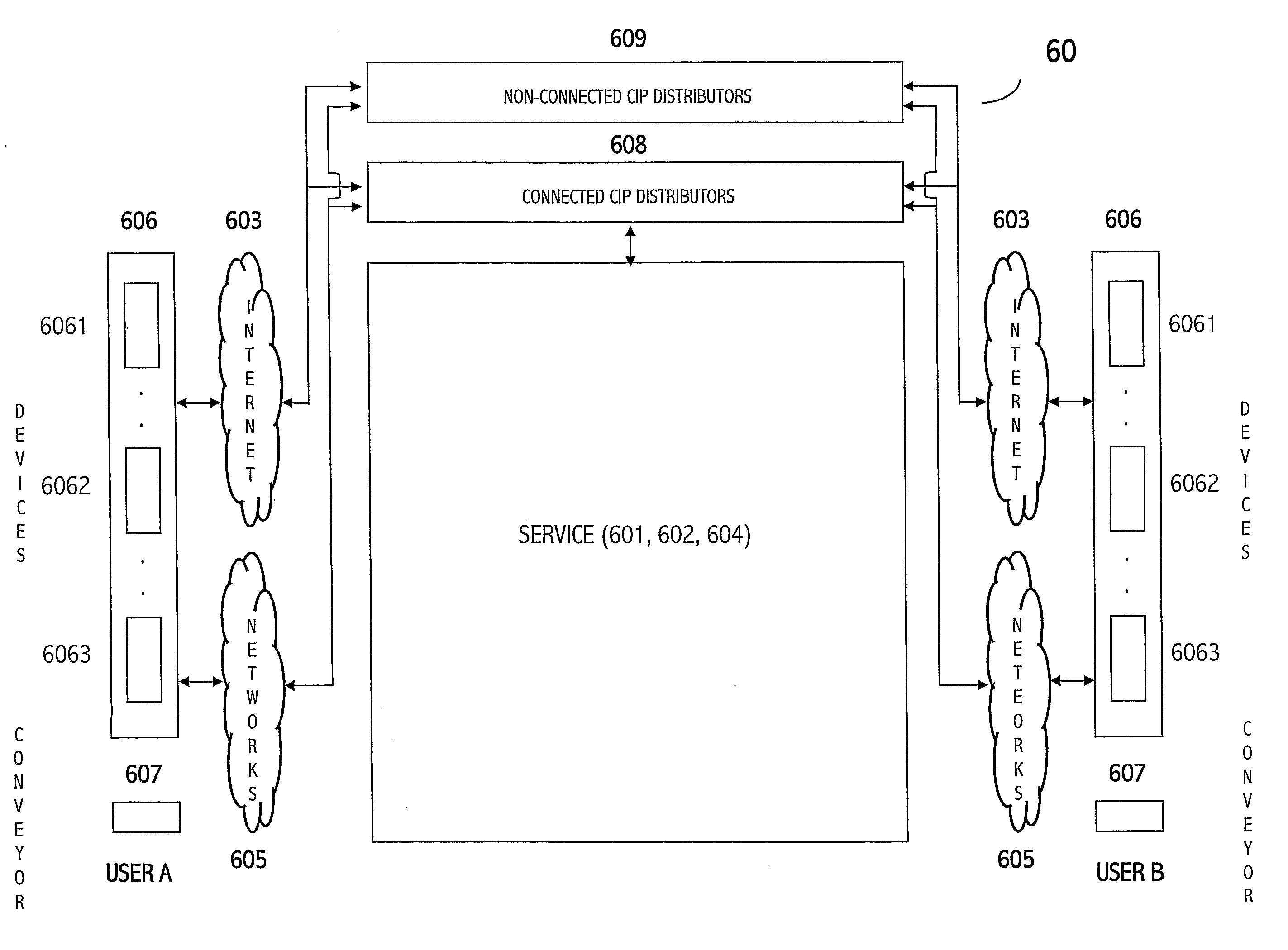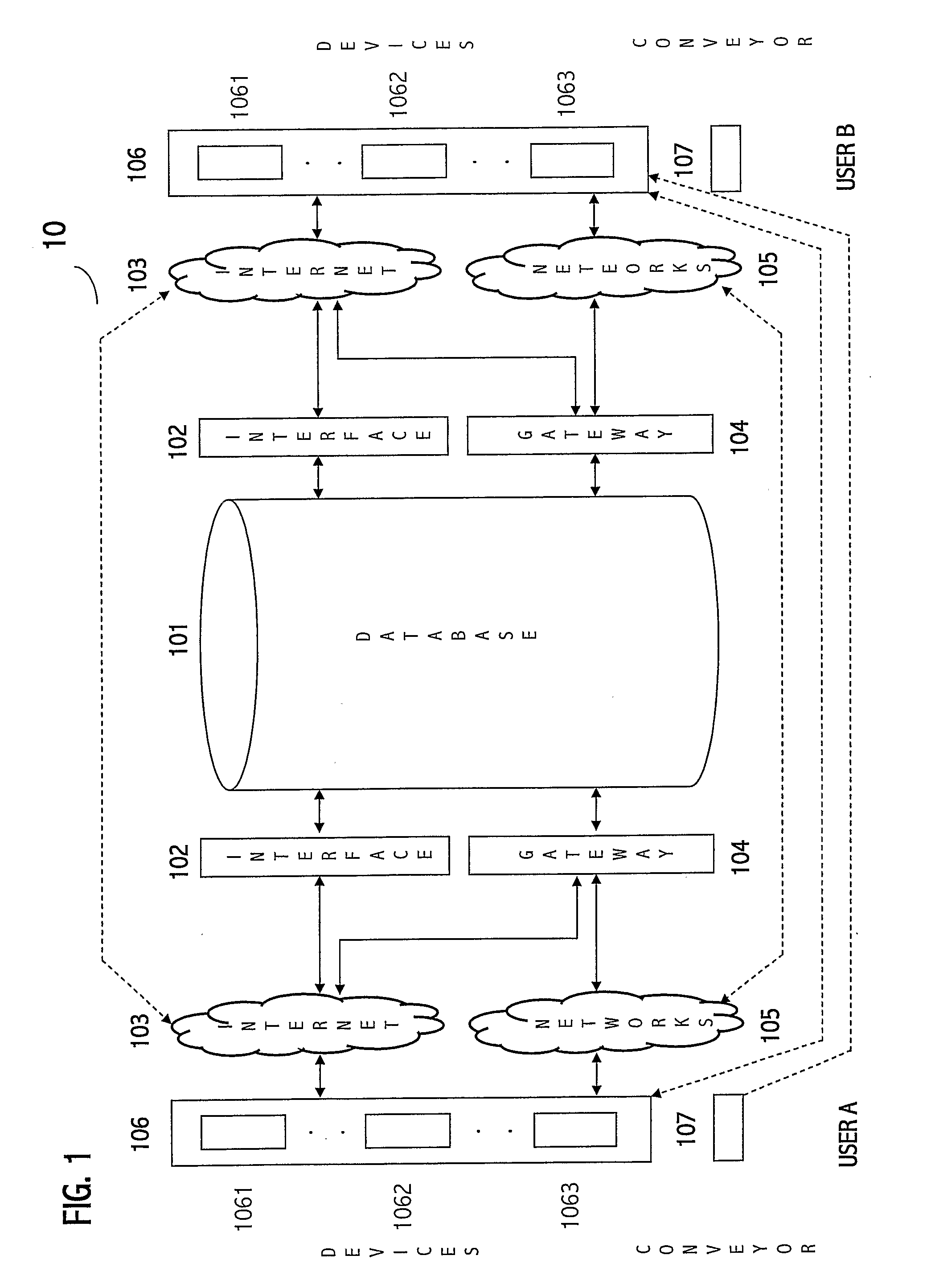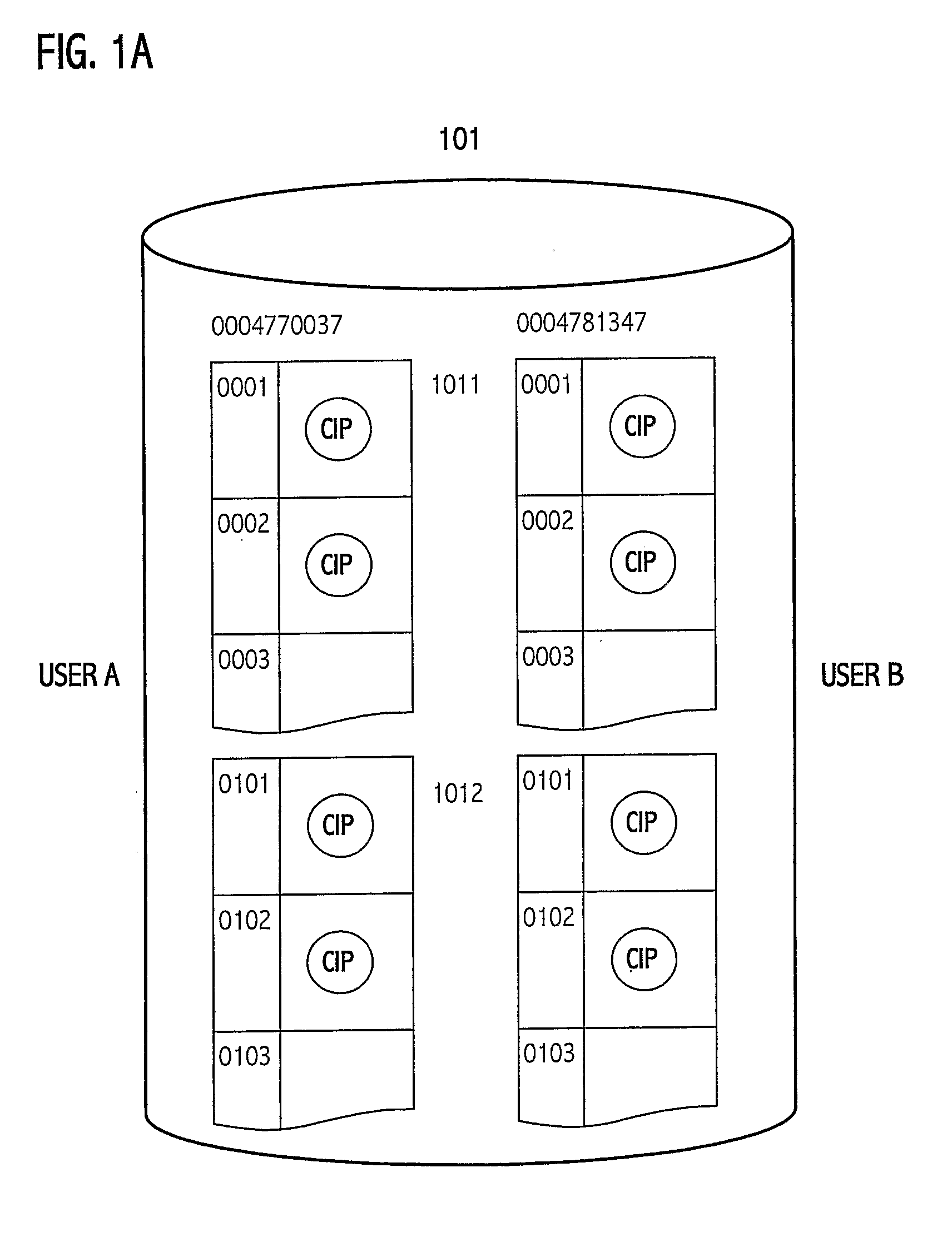Despite the frequency and importance of the task, technology has not to date solved many of the problems associated with the management of contact information.
For example, one's
contact list—the
list of all others, individuals and businesses, for whom one has contact information, together with the contact information—often is less
expansive than one desires and contains information that is incomplete, inaccurate, and in a non-uniform format (meaning some or all of such information is not useful for automated
processing, such as in speed dialing.
This problem is largely due to the fact that the transfer of contact information from one to another typically requires manual transcription (e.g., writing or
typing) of such information by the sender and / or
receiver of the information.
Manual transcription of such information is burdensome, time-consuming, and prone to
human error.
This problem is also due to the fact that it is difficult, often impossible, to find the contact information one needs.
For example, privacy concerns prevent many (even most) individuals from listing their contact information in directories.
What information is listed in public directories is often incomplete, inaccurate, and in a non-uniform format.
Moreover, current
directory services or search engines are largely unable to
handle anything other than straightforward search requests.
If one is successful in finding the information, the transfer of it again typically requires manual transcription, making it difficult or unfeasible to preserve the information in one's
contact list.
For another example, one's
contact list often contains information that is out of date (and thus inaccurate and / or incomplete); meaning, the contact information for one or more individuals or businesses in one's contact
list has changed since last entered in the
list, and thus the list does not contain the up-to-date information.
This problem is due in part to the manual transcription requirement for sending and / or receiving updated contact information.
This problem is also due in part to the substantial other effort typically required for communications between the sender (or would-be sender) of updated contact information and each of the many receivers (or would-be receivers) of such information.
Such effort is also burdensome, time-consuming and prone to
human error.
Conversely, one's contact list often contains special-purpose contact information that is not valid, cluttering the list and sometimes confused with or overwritten in the place of valid information; for example, the individual has returned from his business trip, but his temporary contact information (no longer valid) remains in one's list.
These problems are due in part to the manual transcription requirement and the multiple-communications requirement, on the parts of both the sender (or would-be sender) and receivers (or would-be receivers) of special-purpose contact information.
These problems are also due in part to the substantial other effort typically required for repeatedly auditing the validity of special-purpose contact information in one's contact list.
Such effort is also burdensome, time-consuming, and prone to
human error.
However, one is often unaware of others offerings goods or services of interest.
This problem is due in part to the fact that—though, for example, on-
line search advertising is a fairly effective way to reach those likely to have an interest in one's goods or services—there are few if any effective ways to target one's contact information (or an advertisement) at the
consumer who is not actively searching for it.
This problem is also due in part to the manual transcription requirement, meaning, for example, even if a
consumer stumbles upon an on-line advertisement of interest, it is often difficult or impossible to save it for later reference.
For another example, contact information in one's contact list is often lost.
The devices may be misplaced, stolen, or damaged, or otherwise become inaccessible by the individual (e.g., when switching jobs and having to leave a desktop computer behind); and all contact information residing on a lost device, if not stored in a other
address book, is also lost.
This problem is due in part to the manual transcription requirement and the auditing requirement for storing one's contact list in an
address book that is less subject to loss.
This problem is also due in part to the fact that, though there exist automated (at least partially) means for storing one's contact list in such an
address book (e.g., an electronic address book stored on-line at an
internet service), such means are prone to error and are burdensome and time-consuming to use.
That is, for example, contact information stored on an individual's desktop computer may not be available to him when he is away from his computer and trying to place a call from his
mobile phone.
This problem is due in part to the manual transcription requirement and the auditing requirement for
synchronizing the storage of one's contact list in multiple address books.
This problem is also due in part to the fact that, though there exist automated (at least partially) means for
synchronizing the storage of one's contact list in multiple electronic address books (including one stored on-line at an
internet service), such means are prone to error and are burdensome and time-consuming to use.
However, such valuable intelligence goes largely un-mined.
 Login to View More
Login to View More  Login to View More
Login to View More 


